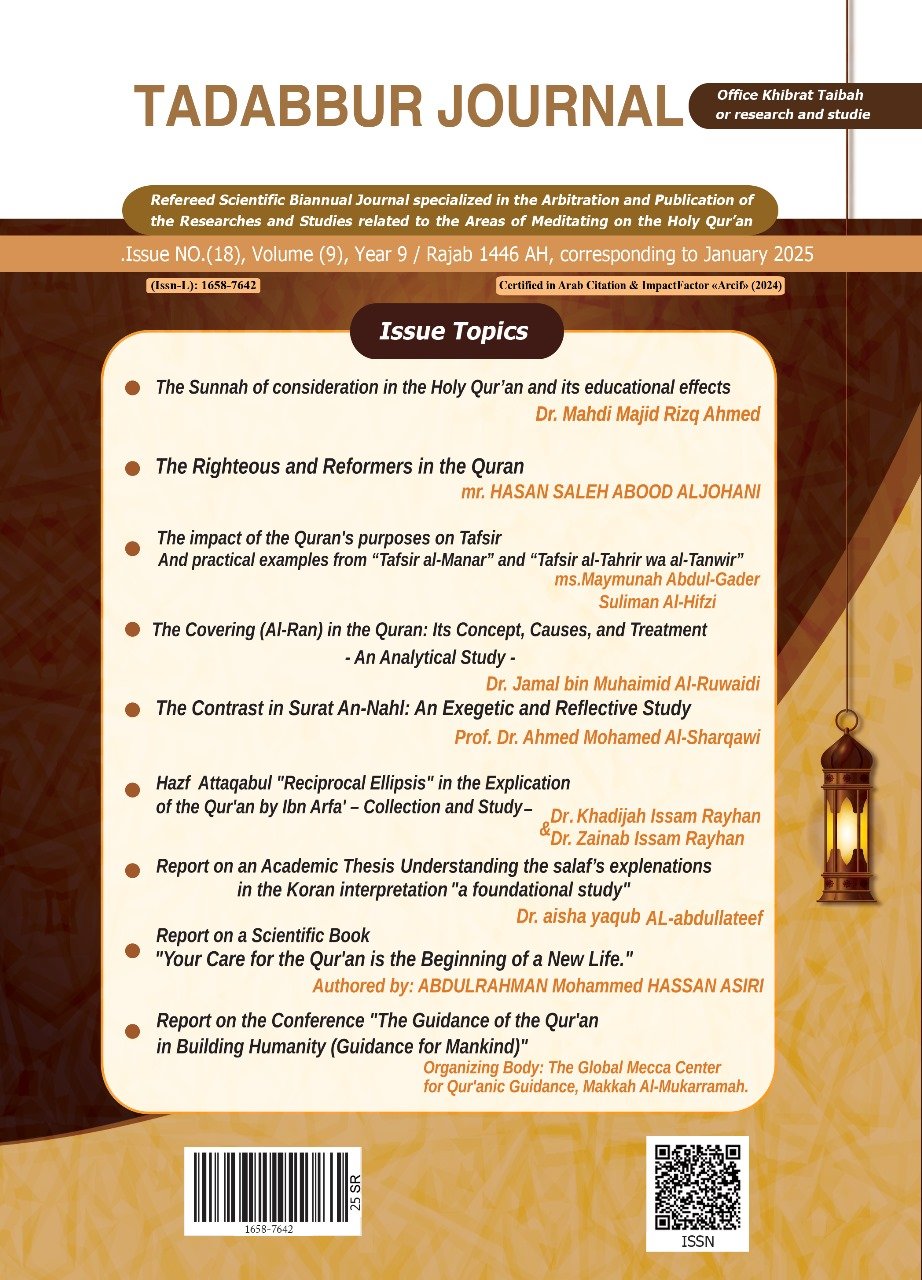The Righteous and Reformers in the Quran
Main Article Content
Abstract
The current study addresses The Righteous and Reformers in the Quran as an applied model for thematic exegesis. It focuses on studying and analyzing Quranic verses that discuss the concepts of righteousness and reform, while categorizing the types of reformers mentioned in the Quran. The main objectives of the study include reviewing Quranic verses highlighting righteousness and reform, classifying the categories of reformers as presented in the Quranic texts, and emphasizing the Quran’s role in nurturing righteousness in belief and behavior, contributing to correcting the trajectory of the Muslim Ummah, confronting the manifestations of corruption and moral decay affecting individuals and societies. The study employs the inductive-analytical method, collecting relevant Quranic texts and analyzing them thematically and methodologically. The main findings and recommendations include: reform in the Quran signifies rectifying and straightening distorted matters in alignment with Islamic teachings and divine commands.The righteous and reformers serve as the safety valve of nations, acting as a shield against worldly and otherworldly tribulations.The necessity of perseverance in pursuing righteousness and reform, regardless of challenges posed by tyrants and corrupters.
Downloads
Article Details
Conference Proceedings Volume
Section

This work is licensed under a Creative Commons Attribution-NonCommercial 4.0 International License.
Indicating to the intellectual property, copyrights, and open access right:
According to the Budapest Initiative 2002; tadabbur Journal, which is issued by Khibrat Taibah For Research and Studies in Medina, provides free open access to its publications, and applies the Creative Commons license:
Attribution- Non-Commercial 4.0 International (CC BY-NC 4.0) for the works it publishes from peer-reviewed scientific research and reports, which are freely available on the Internet, and which allows any user to read, download, copy, and distribute (Convert), print, search, or create links to the full texts of the journal’s research and publications, and analyze them in an automatic manner for discovering them, sending them as software data, or using them for any other legal purpose, without financial, legal, or other technical barriers beyond those related to Internet access.
It also highlight that the only barrier to reproduction and distribution, and the only role of copyright in this field, is the necessity of granting the authors of the journal’s research and reports and the publisher the journal; Control over their works, and the right to official recognition and reference citations.





